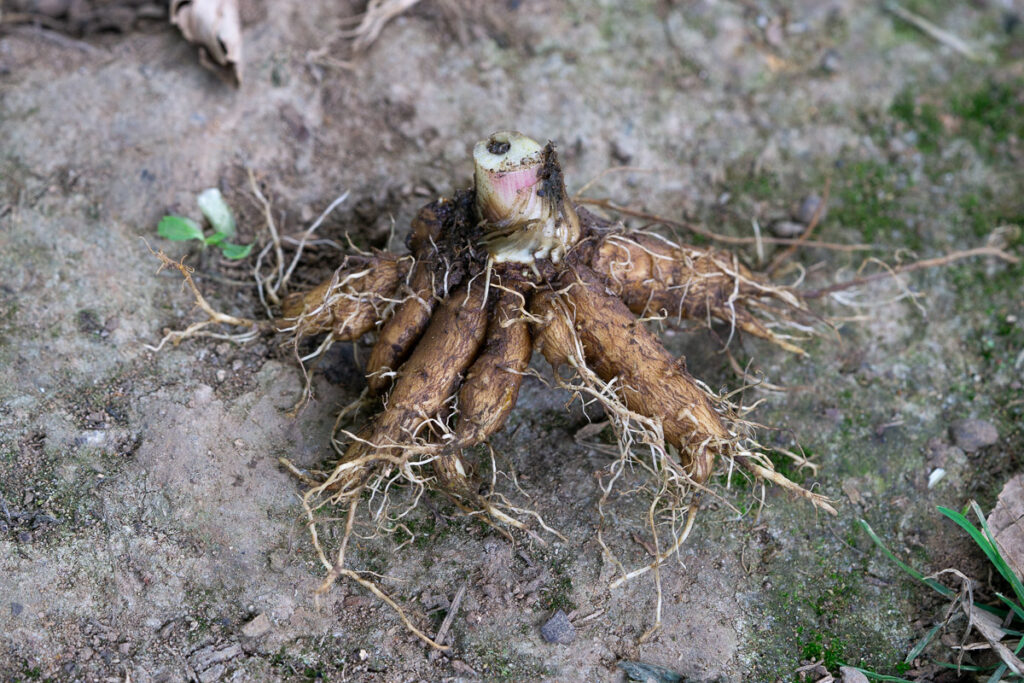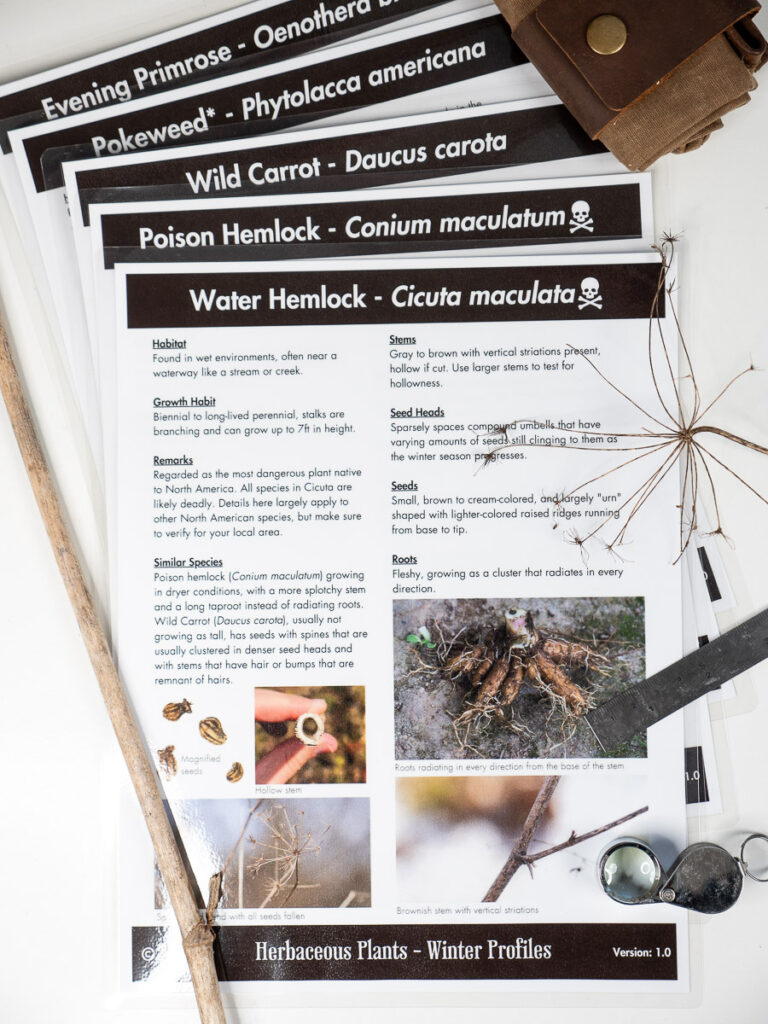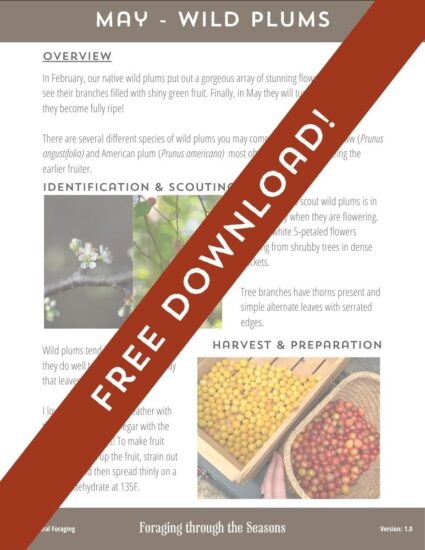The reason why you may want to be able to identify water hemlock in the winter is expounded on more in my article, Wild Carrot vs Lookalikes in Winter, but it is mainly to build awareness of an important poisonous plant throughout every season. This, in my opinion, is a key component of building your confidence as a forager!
Winter characteristics of water hemlock
Here are the most important characteristics that you should pay attention to when trying to spot water hemlock in the winter.
I also have all of this information in a downloadable PDF guide format that you can get by clicking here!
- Stems gray to brown with vertical striations present, hollow if cut. Use larger stems to test for hollowness.
- Seed Heads are sparsely spaced compound umbels that have varying amounts of seeds still clinging to them as the winter season progresses.
- Seeds are small, brown to cream-colored, and largely “urn” shaped with lighter-colored raised ridges running from base to tip.
- Roots fleshy, growing as a cluster that radiates in every direction.
- Habitat: Found in wet environments, often near a waterway like a stream or creek.
- Growth Habit: Biennial to long-lived perennial, stalks are branching and can grow up to 7ft in height.
- Remarks: Regarded as the most dangerous plant native to North America. All species in Cicuta are likely deadly. Details here largely apply to other North American species, but make sure to verify for your local area.
- Similar Species: Poison hemlock (Conium maculatum) growing in dryer conditions, with a more splotchy stem and a long taproot instead of radiating roots. Wild Carrot (Daucus carota), usually not growing as tall, has seeds with spines that are usually clustered in denser seed heads and with stems that have hair or bumps that are remnant of hairs.
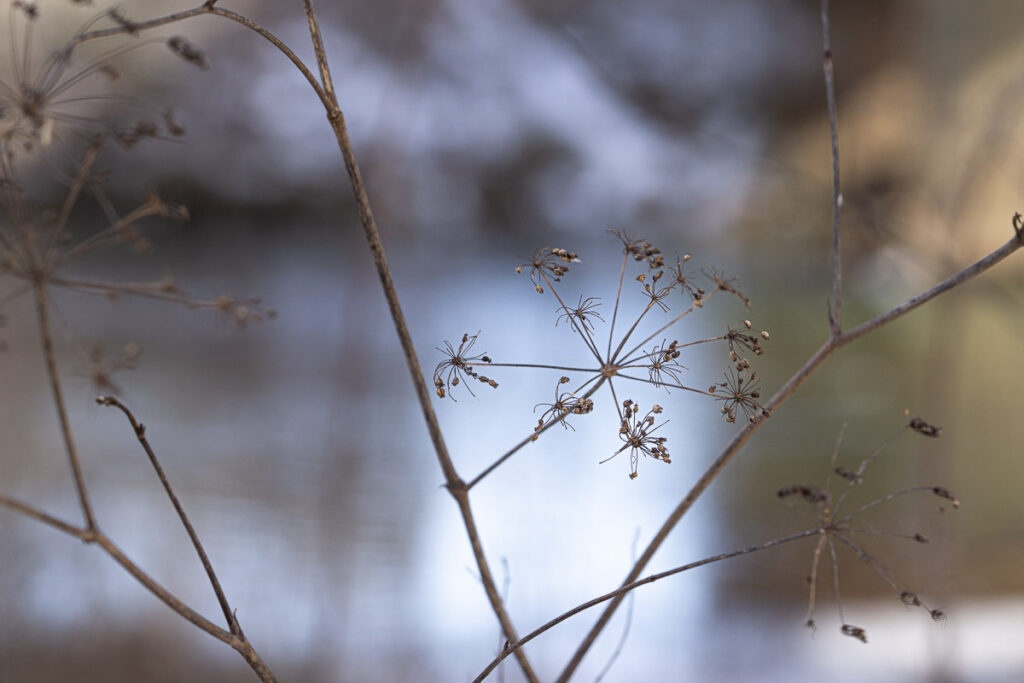
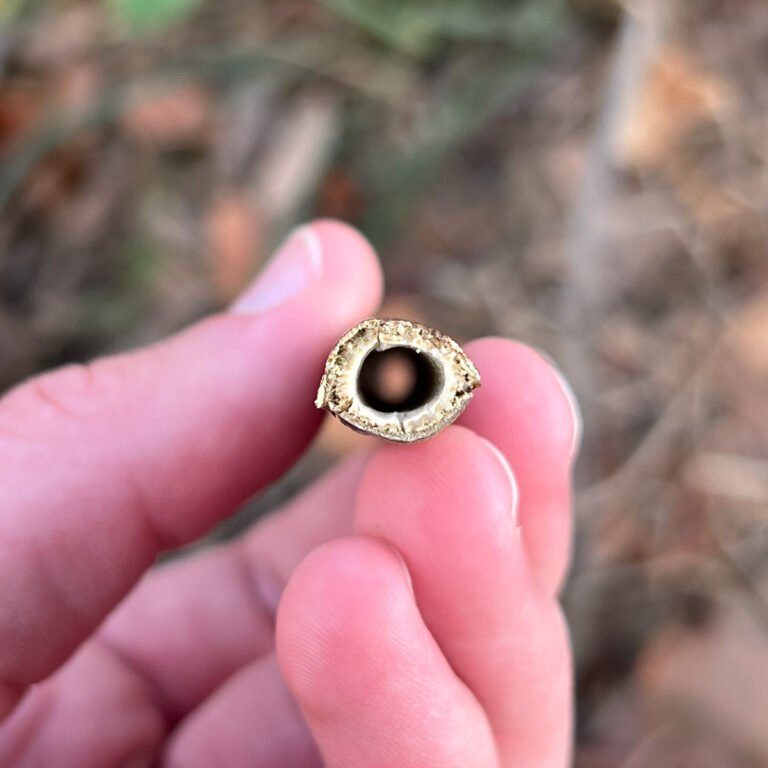
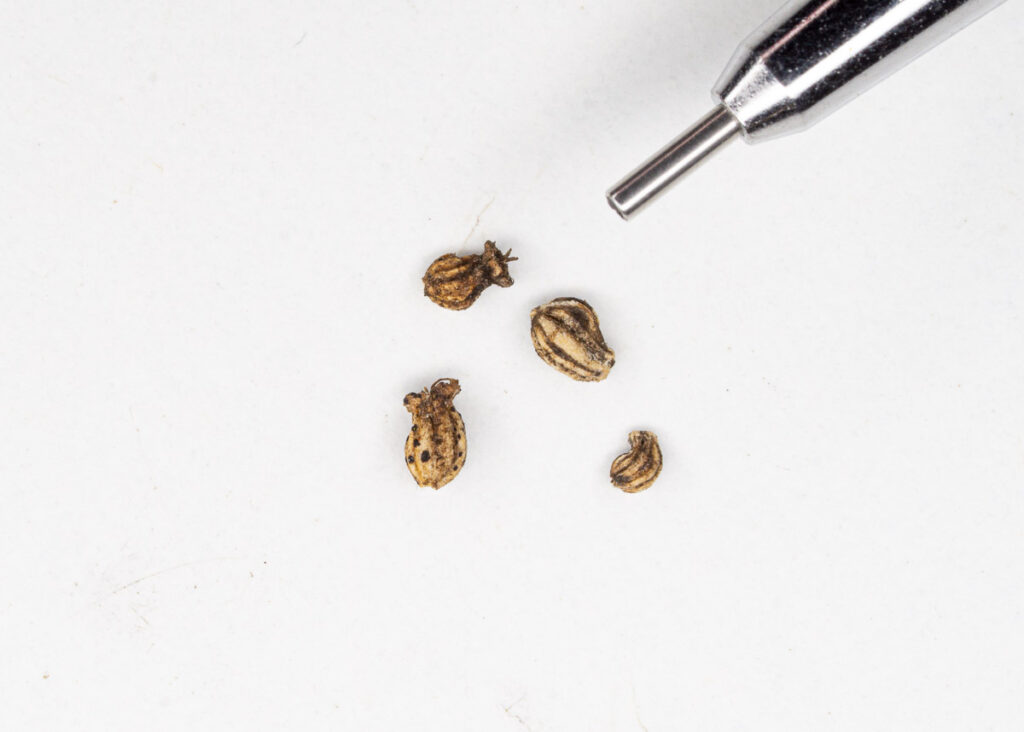
Support my Work
You can get many more downloadable guides from my Patreon page, including other herbaceous plants plus wild medicinal trees and fruit trees!
Consider becoming a member if you would like to see more guides like this!

